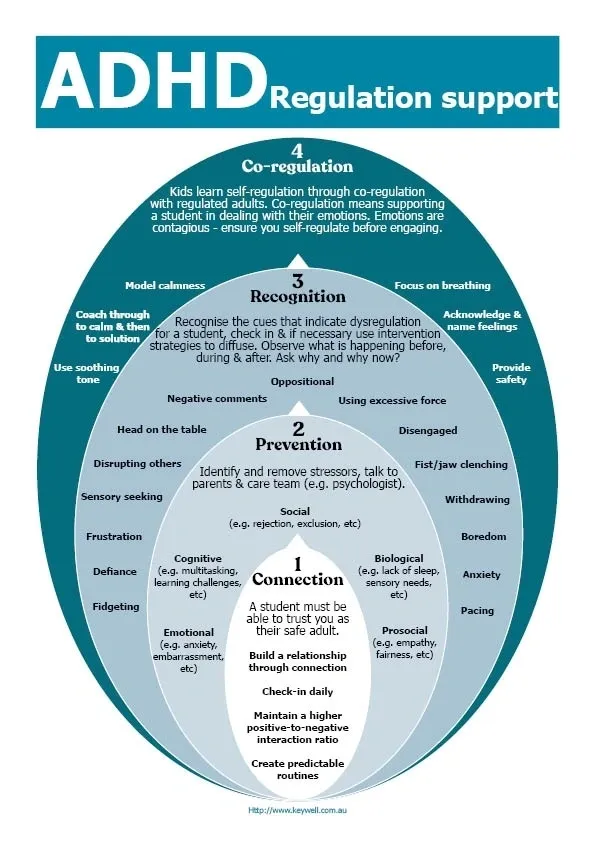A guide to supporting emotional regulation in the classroom. A helpful checklist for teachers to build a consistent strategy.
Teachers have the daily task of creating a positive and productive classroom environment that promotes learning. To do this, they need to understand each child’s needs and be able to support them through a myriad emotional, social, prosocial, biological, and cognitive challenges. It is a heavy load to carry when you consider how many students are in a classroom.
A consistent strategy with a strong focus on
1. Building a solid relationship with a child – safety and trust is key, and personal connection is at its centre
2. Collaborating with parents and care team to avoid/remove known stressors – when this this not possible know how to best assist the student in managing triggers
3. Understanding an individual child’s baseline for learning and being aware of cues that indicate dysregulation – this will help the teacher decide when to check in and when to intervene
4. Using co-regulation strategies to help a student regulate – to be effective, a teacher must be able to keep themselves self-regulated. Reframing the behaviour can assist teachers in remaining calm and empathetic in highly stressful situations.
Download the full Teachers ADHD booklet


